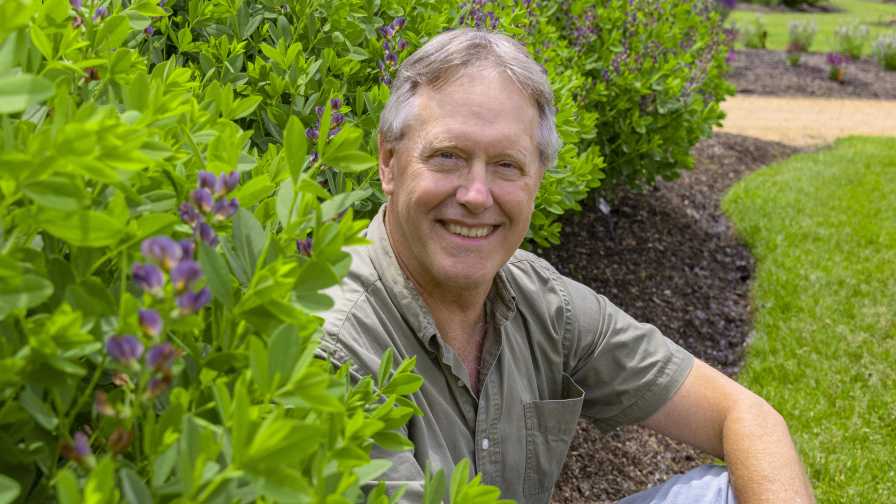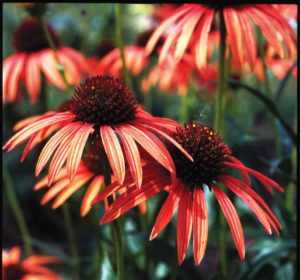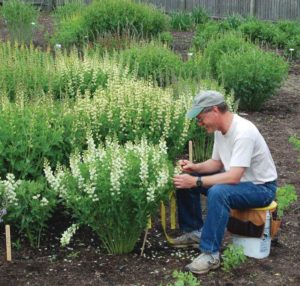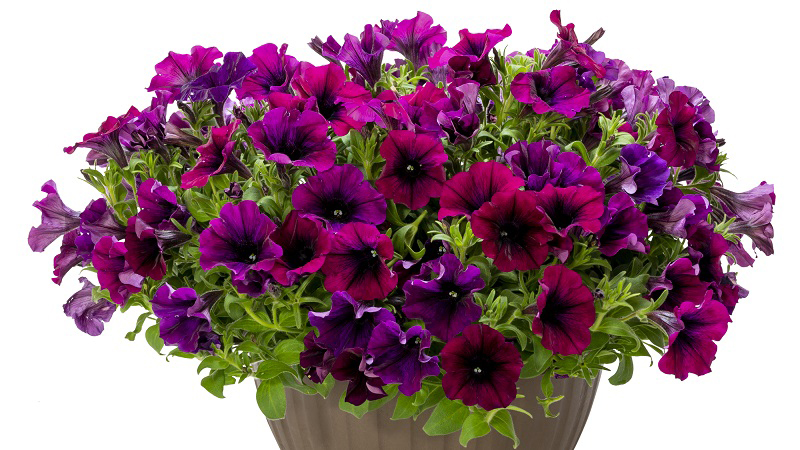Meet James Ault, Greenhouse Grower’s 2019 Industry Achievement Award Winner

James Ault is Greenhouse Grower’s 2019 Industry Achievement Award winner.
Behind every great plant that sustains our industry is a breeder dedicated to excellence. Greenhouse Grower is proud to honor one of those great breeders, Dr. James Ault, Director of Ornamental Plant Research at the Chicago Botanic Garden, as the 2019 recipient of the Medal of Excellence for Industry Achievement.
Ault not only has an immense passion for his breeding work, he’s also committed to bringing out the best qualities in the genetics he works with, especially with North American native hybrids. As a result, he’s the force behind more than 35 plant introductions, including the first orange-colored coneflower, Echinacea ‘Arts Pride,’ and more recently, Panicum ‘Bad Hair Day.’

James Ault made more than 90 crosses to develop ‘Art’s Pride Orange Meadowbrite,’ the first orange coneflower on the market.
Breeding Blood Runs in the Family Veins
Ault shares his love of horticulture and plant breeding with his paternal grandmother who grew ferns from spores and hybridized both Maidenhair and Staghorn ferns, which she often donated to the Fairchild Botanic Garden where she served as a volunteer. But Ault says he didn’t fully realize how cool plants were until he took a course taught at the University of Michigan by Dr. Warren Wagner, a colossal figure in the plant taxonomy field at the time. Soon after, Ault decided to pack enough classes into his Junior and Senior years to earn an undergraduate degree in botany. Later, he received his master’s degree in plant ecology and a doctorate in plant physiology from Louisiana State University.
To this day, Ault says he doesn’t have a horticulture class to his name.
“What I did have was a thorough grounding in what makes a plant tick from top to bottom, and how it interacts with its environment,” he says. “The garden, of course, is an environment, and the same plant functions of water and nutrient uptake, gas exchange, etc., that occur there also happen with native plants in the woods. This is an approach I later brought to my breeding program.”
Ault’s college years and subsequent travels during that time exposed him to numerous Southern and Northern ecosystems. These experiences helped him realize there were many opportunities to do breeding work with North American plants.
“Back then, the cultivars available to the marketplace were mostly ones Europeans developed and sold back to us at a premium,” he says. “I often wondered why we weren’t breeding plants under our own selection pressures and determined early to make that a focus of my breeding work.”
Two Strong Educators Cultivate a Future Breeder
Ault also did a post-doc study at the University of Georgia, where he would come across two influential men who helped shape his career — Allan Armitage and Michael Dirr. At the time, these two horticultural giants led active research programs and had the second editions of their books behind them, yet each one took the time to encourage Ault’s breeding work in the ornamentals field. It was Dirr who eventually urged Ault to apply for a Plant Physiologist position at Longwood Gardens.
Ault’s seven-year stint at Longwood Gardens as a plant physiologist and propagator led him to working with Mediterranean climate plants originating from Australia and South Africa as he developed new crops for the conservatory displays. Some of those plants are still used in the conservatory today. In 1995, Ault left Longwood for his current position as Director of Ornamental Plant Research at the Chicago Botanic Garden, a role he has held for the past 24 years.

Ault is responsible for 12 new baptisia introductions using baptisia crosses of species native to North America. Each intro has experienced the rigors of a Zone 5 climate in the Chicago Botanic Gardens’ trial fields.
What it Takes to Bring North American Native Hybrids to Market
When Ault joined the Chicago Botanic Garden, the institution already had a strong perennial plant evaluation program. One of the first projects Ault took on was to start a perennials breeding program. Plant Evaluation Manager Richard Hawke already had 1,000 to 1,200 perennial taxa in the ground, so Ault had a head start on the project with proven breeding stock.
Ault says Hawke has been a steady supporter and partner over the years in developing the Chicago Botanic Gardens’ breeding program.
“Plant breeders can sometimes be too harsh of self-critics,” he says. “Richard is always looking over my shoulder and encouraging me to get a unique plant into the marketplace. He has been that good, objective eye for me. I have been lucky to have him as a strong advocate and supporter for my plants.”
From day one, Ault focused on interspecific hybridization, or crosses, of two or more plant species. All his breeding work is done in-ground with minimal inputs, and plants are at the mercy of all the environmental pressures a Zone 5 climate can throw at them.
Over the course of his career, Ault has worked with genera such as aster, phlox, echinacea, vernonia, and baptisia, to name a few. He has a particular interest in old-school plant monographs, which led to his work with breeding baptisia. In the 1990s, he studied a baptisia monograph by Mary Larisey, where she described six to seven naturally occurring hybrids of baptisia from North America. He wanted the industry to have access to more of these hybrids and set out to make that happen. As a result, Ault has introduced 12 new baptisia introductions over the years, including selections in the Prairieblues Baptisia series such as ‘Lunar Eclipse,’ a unique hybrid with flowers that open white and over several days turn to a dark violet.

Pollinators love Vernonia ‘Summer’s Swan Song,’ one of Ault’s newer intros that is starting to move into the marketplace through Chicagoland Grows.
In 1986, The Chicago Botanic Garden started Chicagoland Grows to work jointly with The Morton Arboretum, already renowned for its tree breeding program and historic woody plant collections, and industry professionals in the Ornamentals Growers Association of Northern Illinois and throughout North America. The goal was to develop, select, evaluate, produce, and market new and recommended plant cultivars of Midwestern-hardy plants regionally, nationally, and worldwide. Plant sales generate royalties that support further breeding and research efforts at the Garden and Arboretum. As part of his current role at the Chicago Botanic Garden, Ault serves as Chair and Manager of Chicagoland Grows, and he has been instrumental in its development. It is a small plant introduction program, producing two to three plants a year, with a well-known reputation for both its perennial and woody plant introductions.
Small Breeders Have an Important Role to Play
It can be a challenge for smaller breeding programs to compete with larger breeding companies that are fully staffed and funded. It’s even harder for smaller breeders to find a genera to focus on that haven’t already been tapped out. While Ault says he doesn’t know what the future holds for smaller breeders, he does see smaller plant breeders continuing to add value on a local and regional level.
“Sometimes things that are bred in only one location aren’t good for the entire universe,” he says. “There are going to be places where one plant performs better than others. There is definite value to regional plant breeding programs and regional introductions that are specifically suited to these environments.”
As Ault nears the end of his career — with retirement, a greenhouse full of orchids, and a lily breeding hobby summoning him — he isn’t finished with his breeding contributions yet. He has a few more perennial intros ready to distribute over the next three to four years and some more grass varieties to introduce to the industry. After that, he plans to spend his retirement “keeping intellectually busy and having a grand good time,” along with spending time with his two life-long loves — his wife Carolla and his breeding hobby.










